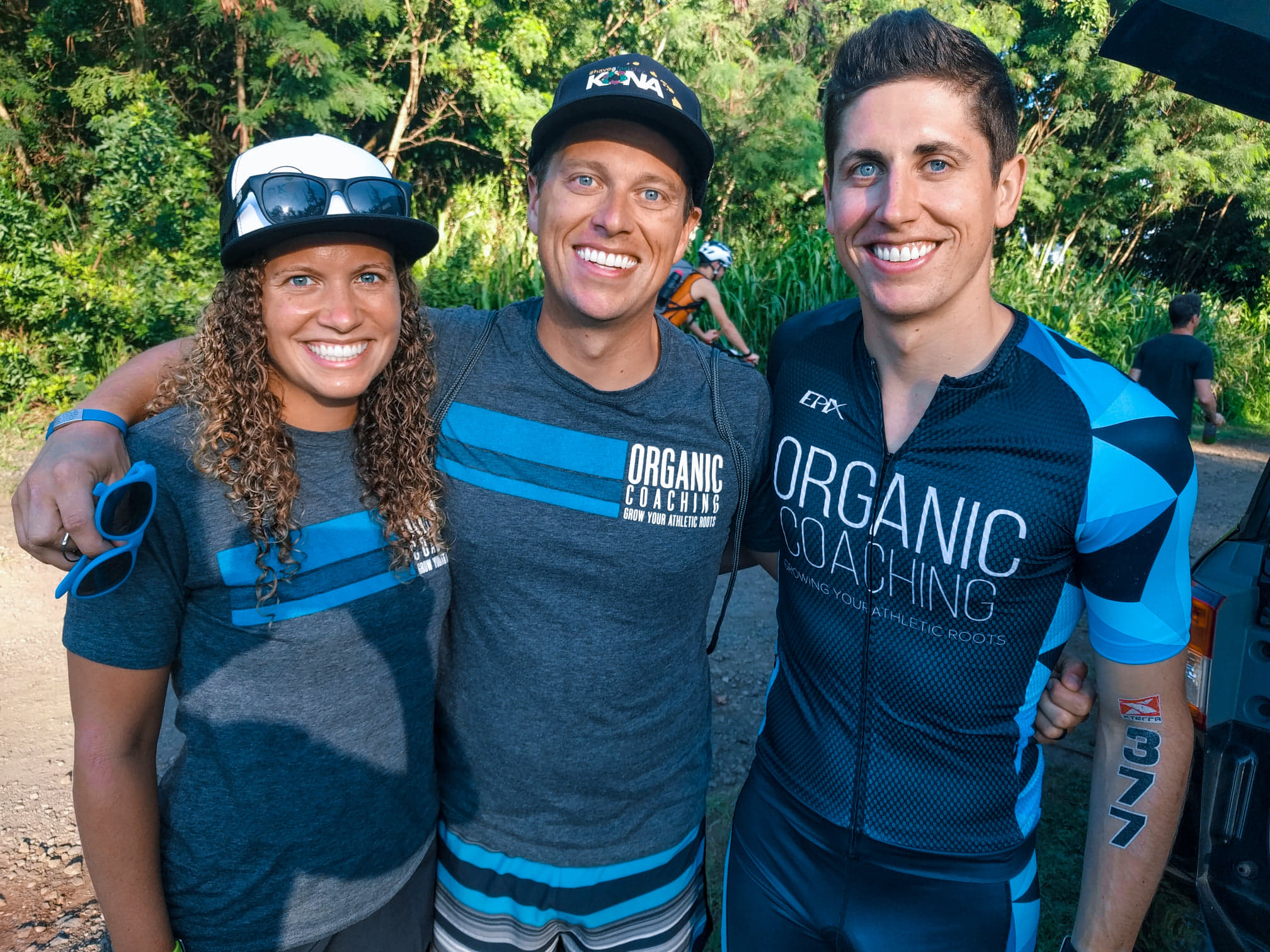
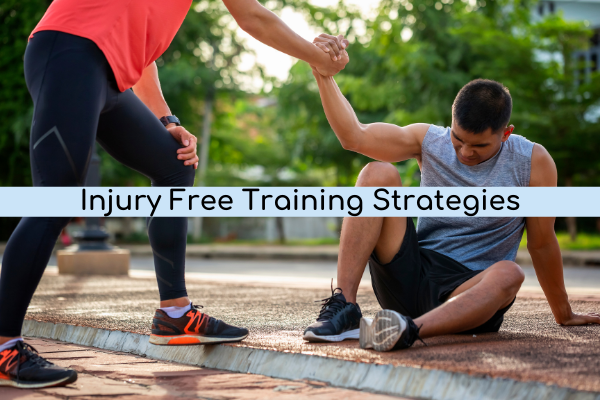
At its core, triathlon provides a fundamental method for staying injury-free: cross-training. We train in swim, bike, and run to gain proficiency and fitness in each discipline but along with that, we guarantee we aren’t overly focused on any one movement or activity. This reality sets our sport apart from so many others, not just in terms of difficulty, but in the built-in benefit of not limiting our modality of exercise to a single movement or repetitive motion.
So, if you stop reading now just know that consistent training for triathlon itself is a substantial way to prevent injury! But I hope you read on for more because there are tons of super valuable tips to keep you injury-free all season long!
Even with our default multi-discipline approach, there are still some important steps we can take to greatly reduce our chance of injury, particularly, knee injuries. If you’ve been in the running or triathlon community for any length of time, you’ve probably noticed that injuries, particularly leg injuries happen a lot. Sometimes it’s overtraining, sometimes it’s going too fast or too far (or both) too soon. And unfortunately, other times it’s unclear where it started, injuries just sort of show up. In all of these situations, we can still take action to improve our chances of staying healthy, injury-free and thriving in sport.
Coach David recently wrote about the many benefits of proper warm-up and cool down. This is a big one when it comes to preventing injury. This is one of those tips that most of us are aware of but is sadly one of the first things we ignore or skip. I get it, and I’m as guilty as anyone. There’s only so much time and attention we can give to all aspects of life, family, work, and training.
The great thing about the warm-up and the cooldown is you’re already doing the tough part. You’ve set aside time on your schedule to train, you’ve laced up your shoes or went down to the bike trainer. Adding 5ish minutes to the front and back end of your session can be a game-changer in lowering your risk of many types of injury.
But in particular, adding some simple dynamic stretches prior to every run (yes, every run), can be the difference between training with a body that is primed for the stress it’s about to endure and training cold. A quick Google search will give you reliable and appropriate pre/post-run stretches, but the hardest part is building the habit. So, ask your coach to build it into your training plan, or carve out that extra 10 minutes in your schedule. Do this and your knees, hips, ankles, and feet will thank you!
Since the majority of injuries come by way of the run, it’s really important to give considerable attention to the way that we run. Speed and endurance tend to be at the forefront of our minds when it comes to the run, but running effectively and efficiently should be our priority if it means we can do so without acute or chronic pain.
Refining your run form to be more economical involves a few key techniques. New Balance’s “Good Form Running” offers a great foundation for proper form. A forward lean at the hips, mid-foot strike, and a cadence that allows both of those to occur, provide a great start to reducing unnecessary impact, resistance, and pain. Have a friend take a few videos from different angles while you’re running. Identify which of these might be occurring. With run form adjustments, less is more. Make very small changes and focus exclusively on them for a couple of weeks before moving on. Then reevaluate. Have you improved in that area? Does another incremental change make sense? Avoiding changing too much too soon ensures you’re not putting significantly new demands on muscle tissue and fibres that tend to be less resilient. Measured and incremental changes to your run technique can yield better pace and economy of movement but more importantly, can allow you to run healthy and keep your knees, legs, and feet safe.
Training equipment and technology continue to significantly evolve. Many times we make our decisions on what bike to buy or which shoes to use based on the assumption that all gear will generally work well for everyone. And to some extent, that can be true, but when it comes to keeping injury at bay, proper fit is a crucial step in making sure your equipment is adjusted, well-suited, and personalized to you.
For the bike, having the initial size correct is very important but once you’ve made your choice, getting in with a professional bike fitter is key. Whether it be a leg length discrepancy, saddle height or reach issue… or all of the above. A fitter can fine-tune all aspects of your fit, including your pedal stroke consistency and efficiency. While this can have very positive impacts on your performance it also is a big step toward ensuring the hundreds of hours and thousands of pedal strokes aren’t leading to an injury.
Shoe fitting is objectively less complicated, but not any less tricky. Everyone has different muscle structures, tissue resilience, and flexibility, so finding the right shoe can involve a lot of experimentation and testing. With the prevalence of online shopping and the multitude of shoe options available, it can be easy to overlook the tremendous value of seeking out a knowledgeable run and shoe specialist. Someone who can look at your gait and offer you insights into the implications of different shoe types, the “drop” amount, support, durability, and a host of other variables. Many local run shops offer these services for free and are invested in helping people find shoes that work for them. While finding the right fit can involve trial and error, it is worth the time and effort to reduce the chances that your equipment is contributing to discomfort, poor form, or lack of support.
Building strength and increasing the recruitment of supporting muscle groups is a key piece to the injury-prevention puzzle. There are loads of excellent exercises which serve to isolate and shape the primary, secondary, and tertiary fibres. There are excellent resources available to craft a solid strength plan, but similar to warming up and cooling down above, knowing what to do is only helpful if you devote the time to do it. While we can’t make everything of equal importance, when it comes to keeping our bodies healthy, strength and mobility are some of the few non-negotiables. An entire series of articles could be devoted to the types and methods of excellent strength training but without discipline and consistency to make these sessions a priority, the benefits will never arrive. So as you plot out your schedule, and divide up your training hours, put strength and mobility sessions (aim for 2x/week for 20-30 minutes) on equal footing with swim, bike, and run and reap the benefits not just in improved fitness but in training injury-free!
As you probably noticed, the run has been a central part of each tip today. Swim and bike injuries certainly exist, but run injuries tend to be the more prevalent and recurring. We as triathletes, when thinking about running, often assume if we can’t run a lot, we won’t see gains. To some extent this is true, you need a certain amount of volume to yield a system that can support it for whatever distance you’re training for. However, the method of running you use doesn’t always have to be the same, the pavement pound method.
The other myth out there is that in order to run well, you must run continuously. A very effective way to ensure you’re maintaining proper form and not overextending too far or too fast is with strategic run-walk sessions. Walking doesn’t mean you’re slow, weak, or less athletic. On the contrary, some of our fastest athletes use this method for all distances and levels of competition. It creates an environment where you’re allowing your body to adapt to higher volume or faster paces without your form breaking down which is a primary source of injury. Even a 30-second walk is all it takes to reset, have a mini-break, and begin again with an attuned focus to the form we discussed above. But don’t feel limited to 30 seconds. Taking 60 to 90 seconds between run sets can be completely appropriate, particularly if you are new to running, increasing your volume, or coming back from an injury.
Finally, another method of running to lean into is aqua jogging. This might get some eye rolls from some, but it is a tremendously effective way to work all aspects of the run, without the impact and strain of the landing phase. The resistance of the water provides a consistent, measured, and very challenging effort that allows you to gain the tremendous fitness running offers, while nearly eliminating the risk of injury. You’ll be pleasantly surprised at how well you can work your body, increase total volume, and gain significant aerobic increases with 0% of the strain on the legs. Both of these methods can be used consistently, and will greatly benefit your training while keeping your health a top priority.
Staying injury-free is something we think about almost hypothetically at times, especially when we are healthy. Sadly, it’s not until we’ve picked up that little niggle or serious injury that we get serious about making changes to reduce our risk. The good news is, with a few small tweaks to your plan, you can proactively build prevention into your training regimen, setting yourself up to keep your body pain-free, injury-free, and resilient.
Happy and healthy training!
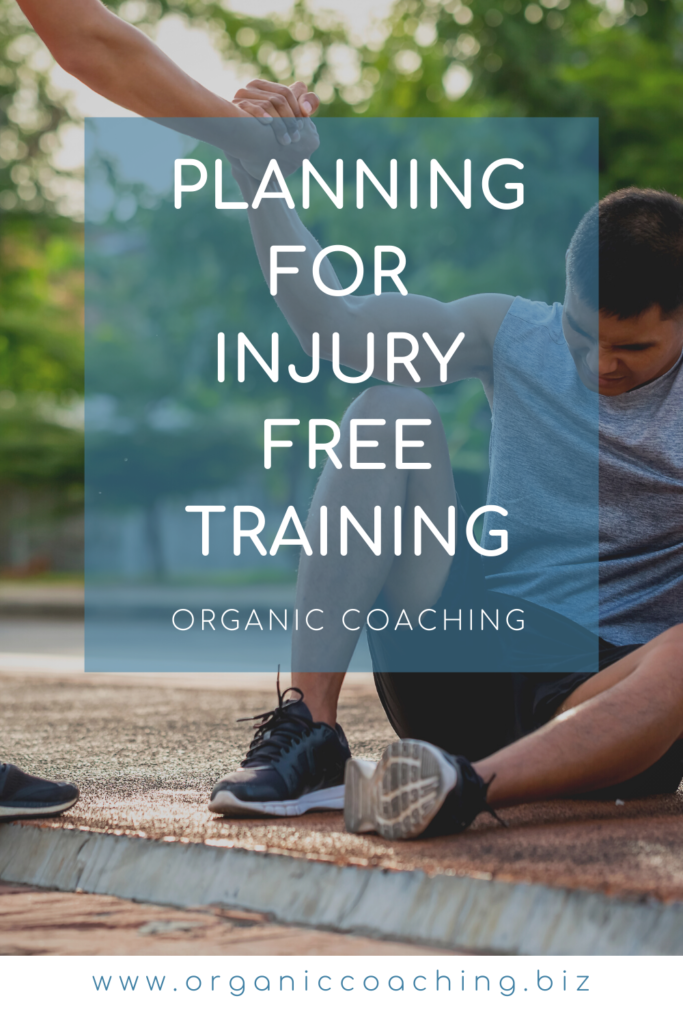
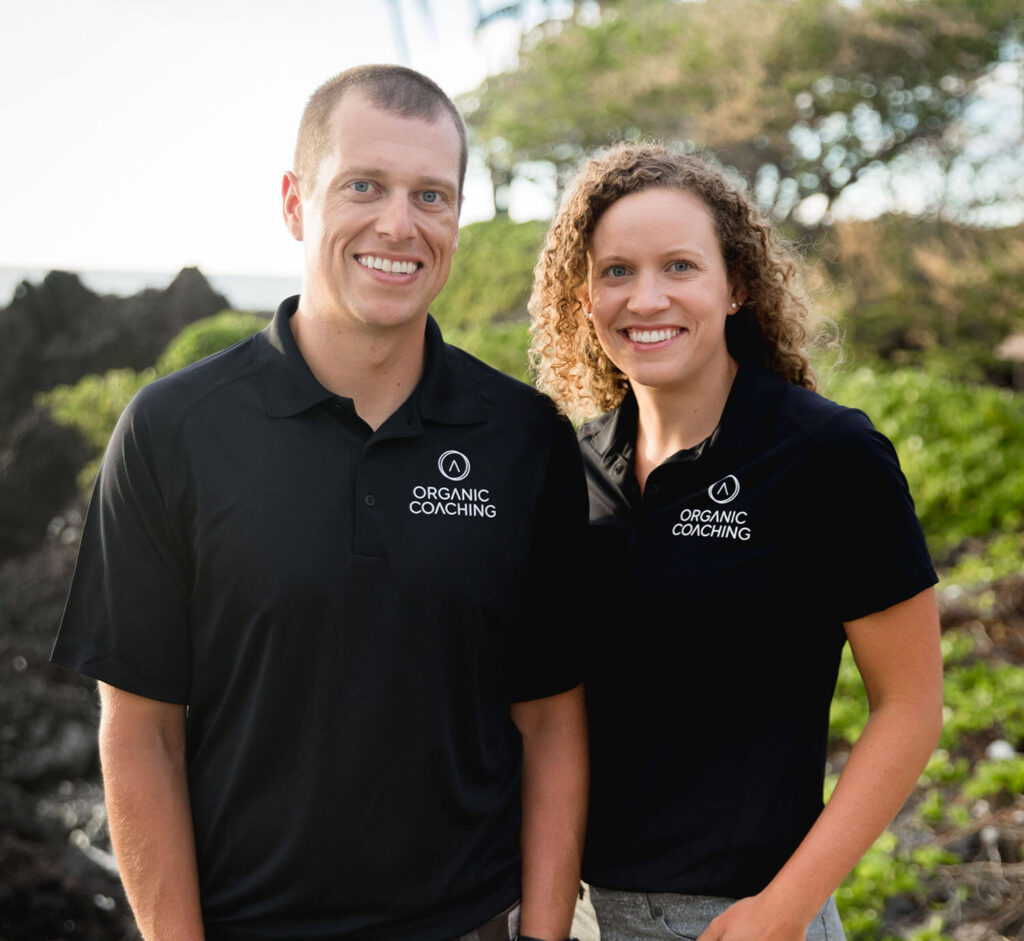
Carly and Tyler Guggemos built Organic Coaching in 2014 with a simple philosophy that works. The idea is to take what you have and grow it to get faster, fitter and stronger. And to do it with the time you have – not the time you wish you had.
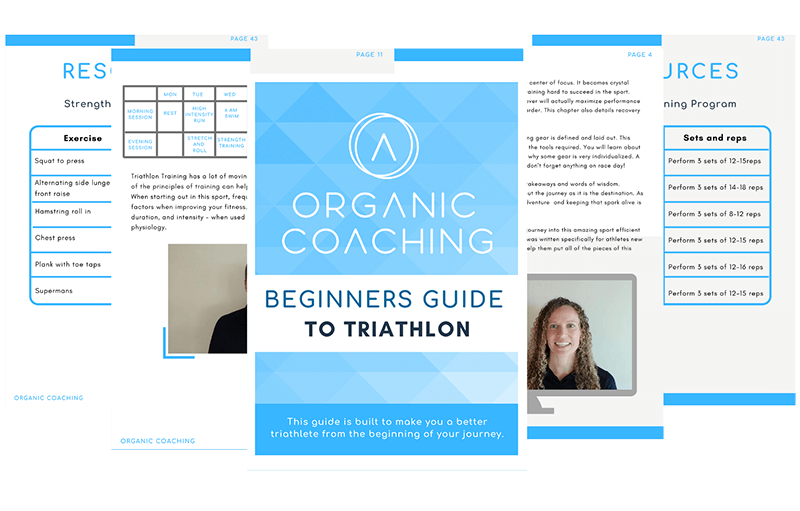
For athletes who are ready to take their training to the next level while still thriving and succeeding in their professional and family life.
Copyright © 2024 Organic Coaching LLC